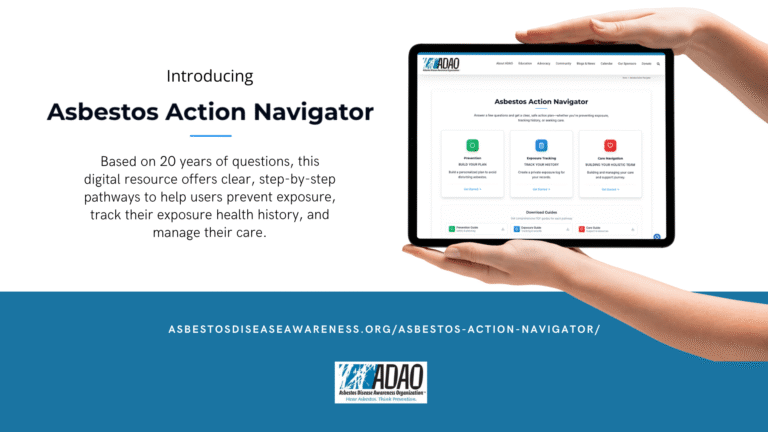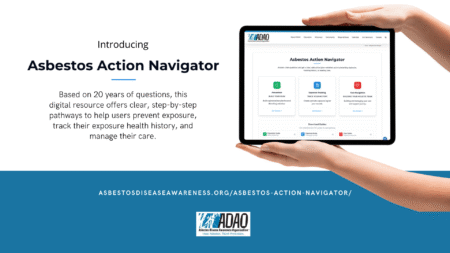Posted on November 4, 2024
This November, as we recognize Lung Cancer Awareness Month, we also mark a significant milestone: 20 years of dedication to raising awareness and advocating for prevention around asbestos exposure.
Asbestos exposure continues to be a major risk factor for developing lung cancer, an illness for which there is, heartbreakingly, no cure once diagnosed. However, there is a powerful tool in our hands—prevention. By spreading awareness about the risks of asbestos exposure, we can work to prevent illness and save lives, one informed individual at a time. This month, we renew our commitment to fight for awareness, education, and protection against asbestos-related diseases.

- Lung cancer is the leading cause of cancer deaths worldwide and the leading cause of cancer deaths in the United States.
- There were 234,580 new cases of lung cancer in the United States in 2024
- An estimated 611,720 people will die from the disease in 2024
Sadly, lung cancer is one of the main illnesses that result from asbestos exposure. There is no cure for asbestos-caused diseases like lung cancer. All we can do is prevent illness and death by preventing exposure to these deadly chemicals.
Here are 5 ways you can prevent you and your loved ones from asbestos-related lung cancers:
- Educate yourself: Asbestos can be found in homes, schools, and workplaces. Knowing where it is located can help you avoid accidental exposure — especially in cases when these structures have been disturbed like during construction, renovation, or natural disasters. .
- Quit smoking: Acquire knowledge about smoking cessation programs. While we know smoking is already harmful, those exposed to asbestos are 5 times more likely to get an asbestos-related respiratory disease if they smoke.
- Know the early warning signs: A cough that won’t go away, tightness in the chest, wheezing, and ongoing shortness of breath may be signs of asbestos exposure. Seek professional medical advice if these symptoms persist.
- Don’t Delay Detection: If you exhibit the warning signs above, ask your physician for a low-dose CT scan. These scans are a new and accepted form of screening test that helps improve early detection and treatment. You can learn about them in this video by Dr. Steven Markowitz or by talking with your primary care physician.
- Learn about your diagnosis and treatment options: Lung cancer develops within the lung; however, mesothelioma develops in the mesothelium. Mesothelial tumors can be non-cancerous (benign) or cancerous (malignant mesothelioma). There are four types of mesothelioma: pleural, peritoneal, pericardial, and testicular. Both lung cancer and mesothelioma have a poor prognosis. Education on the type of cancer can help determine available treatment options for the patient.
Please consider sharing these five points on your social media accounts; you could save a life! The time to act is now. We are stronger together.
In unity,
Linda Reinstein
.


